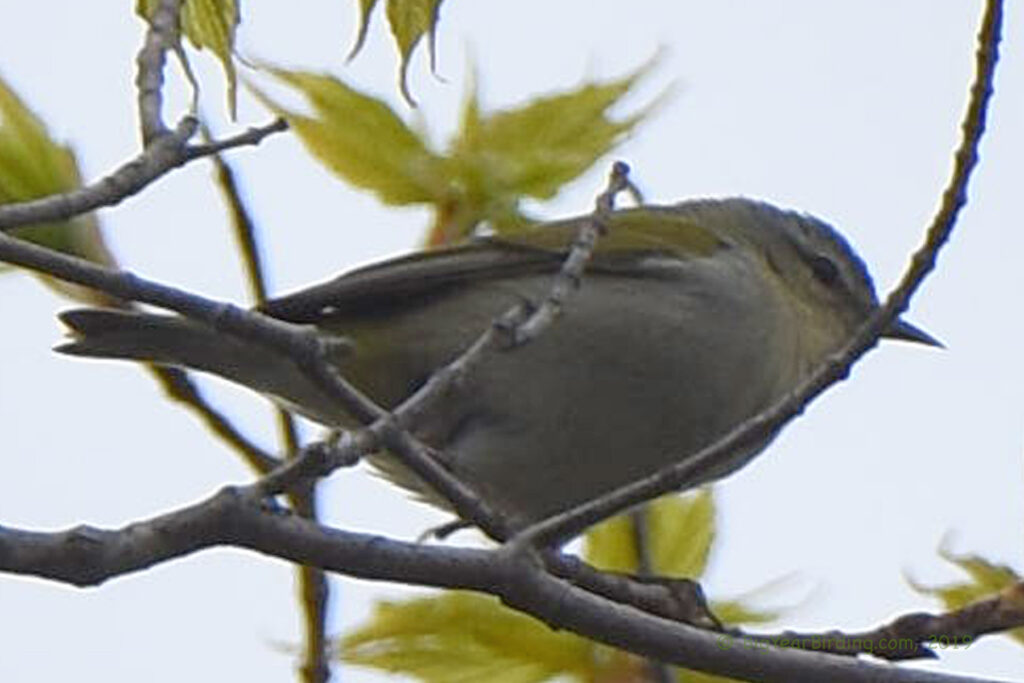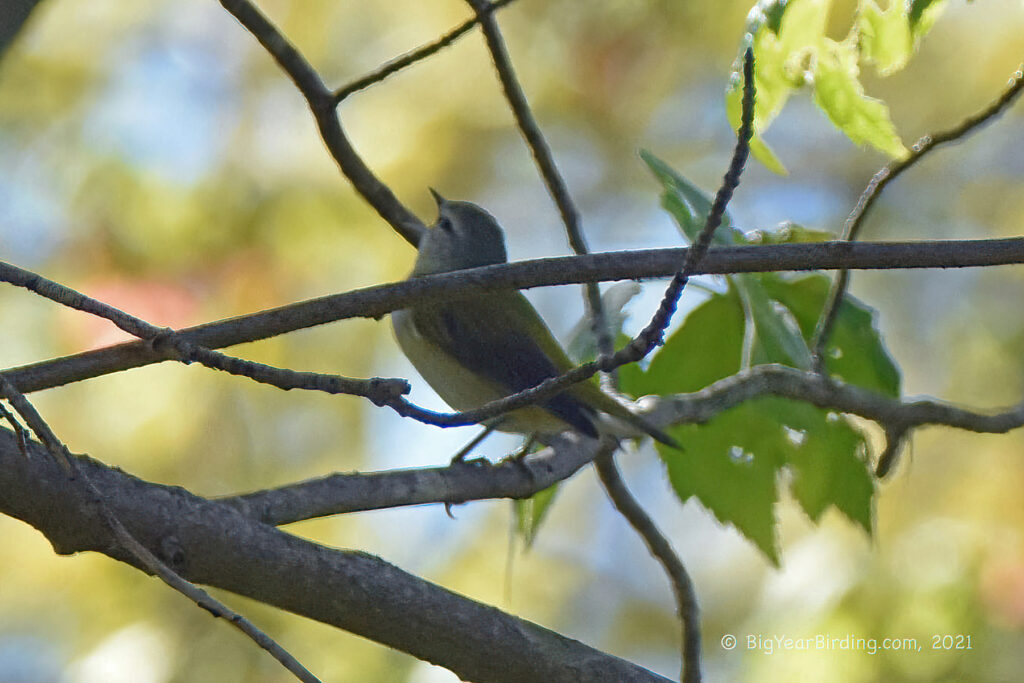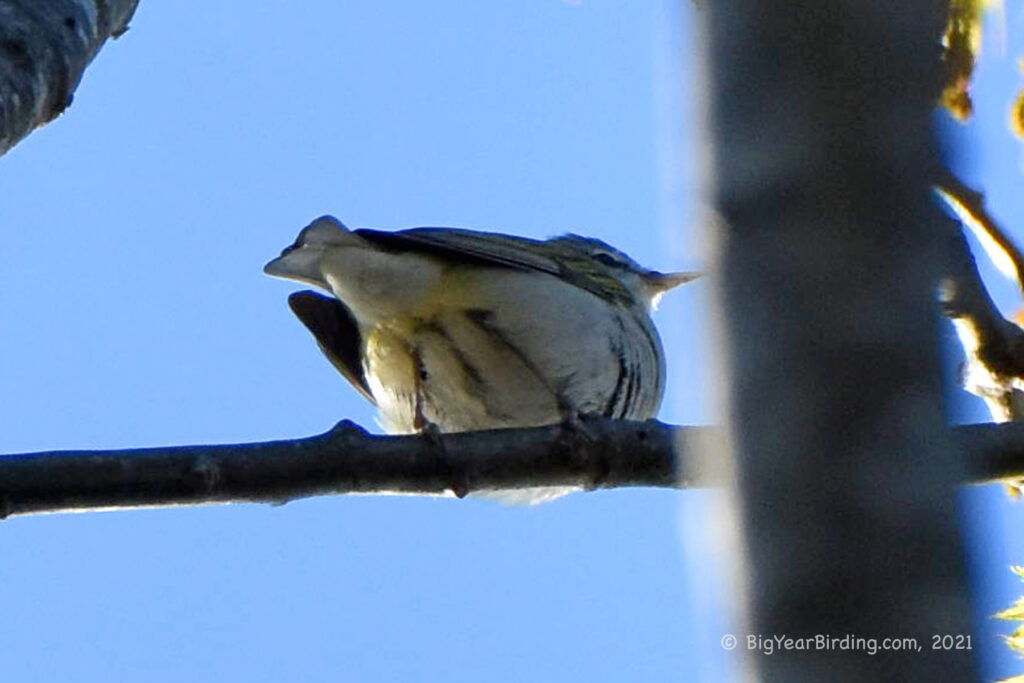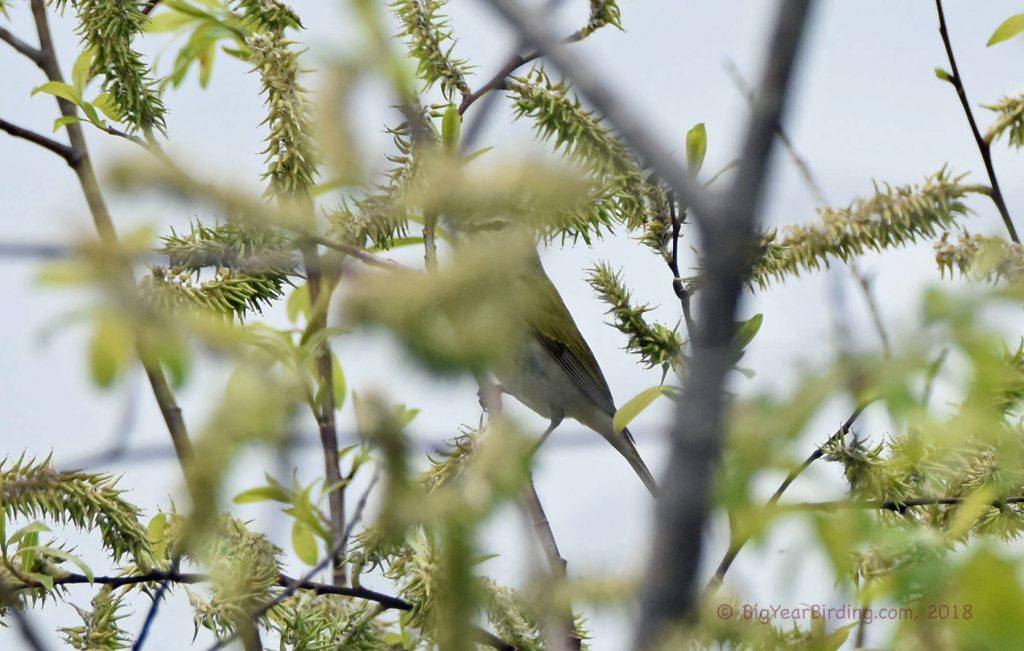
The Tennessee Warbler (Oreothlypis peregrina) is a small songbird that breeds in the boreal forests of Canada and winters in Central and South America. They are approximately 4.5 inches long and weigh around 0.25 ounces. They have olive-green upperparts with grayish wings and white underparts. The Tennessee Warbler has a distinctive gray head with a white eye-ring, and a yellow-green patch on its wings. These distinguishing field marks make it relatively easy to identify, especially during migration.

During the breeding season, Tennessee Warblers can be found in the spruce and fir forests of Canada, where they build their nests in the trees. They primarily feed on insects, such as caterpillars, and occasionally eat seeds and berries. In the fall, they migrate to their wintering grounds in Central and South America, where they can be found in a variety of habitats, including forests, mangroves, and even gardens.
Tennessee Warblers are long-distance migrants, traveling thousands of miles each year to reach their wintering grounds. During migration, they can be found in a variety of habitats, including woodlands, parks, and gardens. They are often seen flitting through the trees, pausing to catch insects, before continuing on their journey. Their migration usually occurs in September and October, as they head south for the winter.

The Tennessee Warbler is a common species, with a stable population, and is not considered threatened. Despite this, their dependence on boreal forests for breeding makes them vulnerable to habitat loss, and they may be impacted by climate change in the future. Conservation efforts to protect their breeding habitat and wintering grounds can help ensure their continued survival. Overall, the Tennessee Warbler is a beautiful and fascinating species, and a joy to watch during migration.

